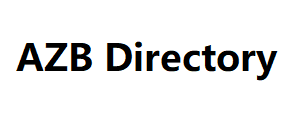Geotargeting involves delivering content, offers, or information to individuals based on their geographic location. It’s a strategy often used in marketing to personalize messaging and improve engagement by tailoring content to the recipient’s location. In the context of “Magic Delivering Location-Based Offers with Phone Number Lists. It seems like you’re describing a scenario where a service uses geotargeting to send. Location-specific offers to people on a phone number list. Here’s a breakdown of how such a process might work: Collecting Phone Number Lists: The service would need to compile a list of phone numbers from individuals who have opted in to receive offers or communications. Geographic Data Collection: The service would also need access to geographic data, which could be sourced from GPS, Wi-Fi, IP addresses, or other location-detection methods.
This data helps determine
The recipient’s location accurately. Segmentation: The service would then divide the phone number list into segments based on geographic Algeria Phone Number List areas. Such as cities, regions, or even specific stores’ catchment areas. Offer Creation. Offers, promotions, or messages are created with location-specific details. Such as deals for a particular store or region. Geotargeting Logic: The geotargeting system uses the geographic data to match each phone number to its corresponding geographic area. When the system identifies the recipient’s location, it selects the appropriate offer to send. Delivery Mechanism: The offers can be delivered through various channels, such as SMS, MMS. Push notifications, or even email if phone numbers are linked to email addresses.
Personalized Messaging
The content of the message is personalized based on the recipient’s location, making the offer more relevant and engaging. Opt-Out AZB Directory Mechanism: It’s important to provide recipients with an option to opt out of receiving further messages if they choose not to participate. Tracking and Analytics: The service might track engagement metrics, such as open rates, click-through rates, and redemption rates, to assess the effectiveness of the geotargeting campaign. Compliance: Ensure that the service complies with relevant data protection and privacy regulations, such as GDPR in Europe or CAN-SPAM in the United States, to protect recipients’ data and privacy rights.
Continuous Optimization: Analyze the campaign’s performance and gather feedback to fine-tune future geotargeting efforts. Geotargeting can be a powerful tool when used correctly, as it enhances customer engagement and increases the likelihood of conversions by delivering content that aligns with recipients’ immediate surroundings and needs. However, it’s important to handle recipient data responsibly and transparently while respecting their preferences and privacy.







